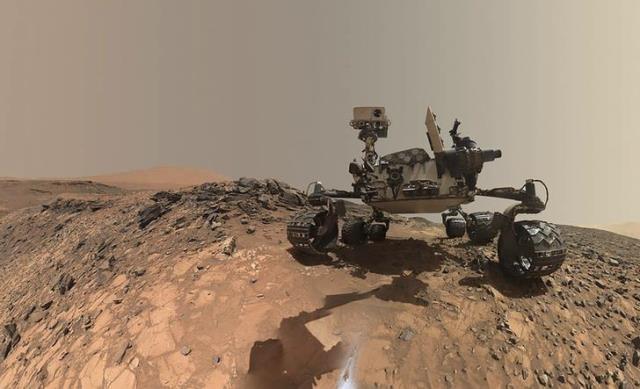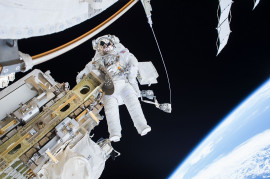
NASA's Mars rover Curiosity has halted its trek up a mountain filled with potentially habitable niches for life while engineers troubleshoot a problem with one of its key instruments, scientists said on Tuesday.
Curiosity landed on Mars four years ago to determine if the planet most like Earth in the solar system ever had the ingredients for life.
NASA on the hunt for space poop geniuses
To answer the question, Curiosity has been drilling into rocks and chemically analysing the samples. Drilling operations have been suspended however due to a suspected problem with the instrument's motor, project scientist with NASA's Jet Propulsion Laboratory Ashwin Vasavada told reporters at the American Geophysical Union conference in San Francisco.
The problem first appeared about a week ago, Vasavada said. Project engineers thought they had resolved it, but the problems cropped back up, he said.
"If we can't move the drill bit down, there's no drilling," Vasavada said. "There isn't any way to sugar-coat that one."
The problem comes as scientists are beginning to glimpse a history of Mars replete with life-friendly, water-rich environments and intriguing chemistry, including the first detection of the element boron.
Scientists believe boron may have led to the formation of the sugar ribose and ribonucleic acid, or RNA, which is present in all living cells on Earth.
The concentrations of boron are increasing as Curiosity ascends Mount Sharp, a 3-mile (5-km) mound of sediment rising from the floor of Gale Crater, where the rover made a daring sky crane-landing in August 2012.
Scientists have learned that the crater was filled with water several times in its history.
Curiosity is currently in an area known as the Murray Formation, located about 656 feet (200 meters) above where the rover landed. That span represents tens of millions to hundreds of millions of years of geologic time, said California Institute of Technology geologist John Grotzinger.
NASA still making the most of 6,000-year-old amulet discovered in Pakistan
"It turns out that this Murray Formation is really sort of a bonanza of all the things we intended to study when we picked the landing site," Grotzinger said.
"We see all of the properties in place that we like to associate with habitability. There's actually nothing really extreme here, for the most part, so this is all very good for habitability over very long periods of time," he added.



































































COMMENTS
Comments are moderated and generally will be posted if they are on-topic and not abusive.
For more information, please see our Comments FAQ